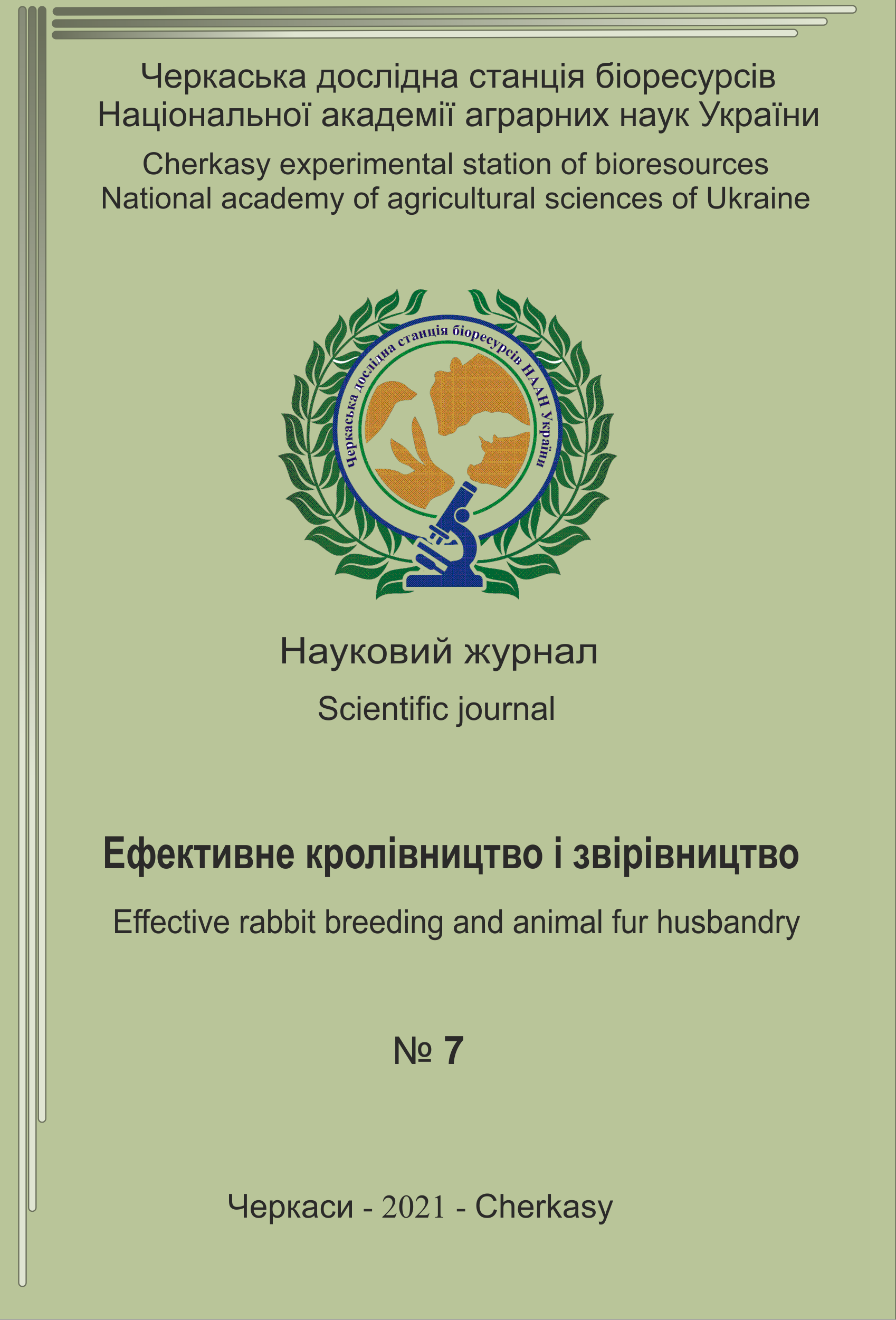FEATURES OF THE FORMATION OF MEAT PRODUCTIVITY OF RABBITS UNDER DIFFERENT TYPES OF FEEDING
DOI:
https://doi.org/10.37617/2708-0617.2021.7.6-14Keywords:
rabbits, type of feeding, growth intensity, meat productivity, carcass weight, slaughter yieldAbstract
It has been proven that the type of feeding of rabbits has no probable influence on indicators of the physiological state of rabbits. Differences in indicators in groups of different types of feeding were within the physiological norm. Under the dry type of feeding with the use of full-rational mixed feeds
standardized for the technological groups of rabbits, the growth of the organism as a whole increased gradually, as in the case of rabbits with a combined type of feeding. A probable difference in the live weight of young animals raised on different types of feeding was not found.
It was established that unlimited feeding, regardless of the conditions of keeping rabbits, provides average daily gains between technological periods of up to 35.9 g. High growth energy is confirmed in the period from birth to 30 days. The maximum average daily increase in the live weight of the experimental rabbits
according to different types of feeding was noted in the growing period from 60 to 90 days, which is explained by the high energy of the animals’ growth.
The rate of slaughter yield in the studied groups did not differ much, and was 56.7% in the group with dry type of feeding, and 56.4% in the combined group. It was established that the types of feeding had little influence on the mass of internal organs of rabbits. Probably higher indicators were noted in rabbits
with the combined type of feeding by weight of kidneys by 7.2% (P>0.95) - 17.9 g, liver by 3.8% (P>0.99) - 71.8 g and the weight of the stomach without contents by 4.5% (P>0.95) – 39.4 g. When examining the length of the intestine in the group of rabbits that had a combined type of feeding, the thin section was probably longer by 6.2% (P>0, 95), the large intestine was also longer, but the difference was not likely to be significant. Unlimited feeding provides average daily gains between technological periods up to 35.9 g. The maximum average daily gain in live weight of experimental rabbits according to different types of feeding was noted in the 7 growing period from 60 to 90 days, which is explained by the high energy of animal growth.
References
37617/2708-0617.2021.7.6-14


